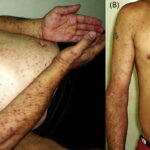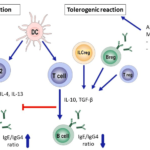Bovine allergies testing, primarily triggered by proteins found in cow’s milk or contact with bovine products, can lead to a range of symptoms affecting the respiratory, gastrointestinal, and skin systems. Accurate diagnosis is essential for effective management and prevention of complications.

Symptoms of Bovine Allergy
Common Symptoms
- Respiratory Issues: Wheezing, nasal congestion, and shortness of breath.
- Gastrointestinal Disturbances: Diarrhea, nausea, vomiting, and abdominal pain.
- Skin Reactions: Hives, eczema, or swelling of the lips and face.
Severe Allergic Reactions
Anaphylaxis, a life-threatening condition, may occur in rare cases, requiring immediate medical attention.
The Importance of Allergy Testing
Bovine allergy testing is critical to:
- Identify the specific allergens causing the reaction.
- Develop a personalized management plan.
- Reduce the risk of accidental exposure.
Methods of Bovine Allergy Testing
1. Skin Prick Test (SPT)
This test involves introducing small amounts of bovine protein extracts into the skin to observe for an allergic reaction. A positive result is indicated by localized swelling or redness.
Advantages:
- Rapid results (within 15-20 minutes).
- Minimally invasive.
Limitations:
- May not detect all allergenic proteins.
- Requires professional supervision due to risk of severe reactions.
2. Specific IgE Blood Test
This method measures the levels of immunoglobulin E (IgE) antibodies specific to bovine proteins in the bloodstream.
Advantages:
- Suitable for patients unable to undergo SPT.
- Offers quantifiable results.
Limitations:
- Higher cost compared to SPT.
- Results may not always correlate with clinical symptoms.
3. Oral Food Challenge (OFC)
Considered the gold standard, this test involves consuming small, increasing amounts of bovine protein under strict medical supervision.
Advantages:
- High diagnostic accuracy.
Limitations:
- Time-consuming and requires close monitoring.
- Potential risk of severe allergic reactions.
4. Component-Resolved Diagnostics (CRD)
CRD provides a detailed analysis of specific bovine protein components responsible for the allergy.
Advantages:
- Helps distinguish between true allergies and cross-reactivity.
- Guides precise dietary recommendations.
Limitations:
- Limited availability and higher cost.
How to Prepare for Allergy Testing
- Consult a Specialist: Seek advice from an allergist to determine the most suitable testing method.
- Medication Management: Avoid antihistamines and other medications that may interfere with test results.
- Fasting Requirements: Follow specific instructions for tests like OFC.
Post-Diagnosis Management
Dietary Changes
- Elimination Diet: Avoid all bovine-derived products, including milk, cheese, and butter.
- Substitutes: Opt for plant-based alternatives like almond, soy, or oat milk.
Medical Treatment
- Emergency Medication: Carry an epinephrine auto-injector for anaphylactic reactions.
- Symptom Relief: Use antihistamines and corticosteroids as prescribed.
Education and Awareness
Educate family members, caregivers, and schools about the allergy and emergency protocols.
Bovine allergy testing is a pivotal step in identifying and managing allergies to cow-derived products. By understanding the various testing methods, preparation steps, and post-diagnosis care, patients can effectively navigate their condition and minimize risks.

